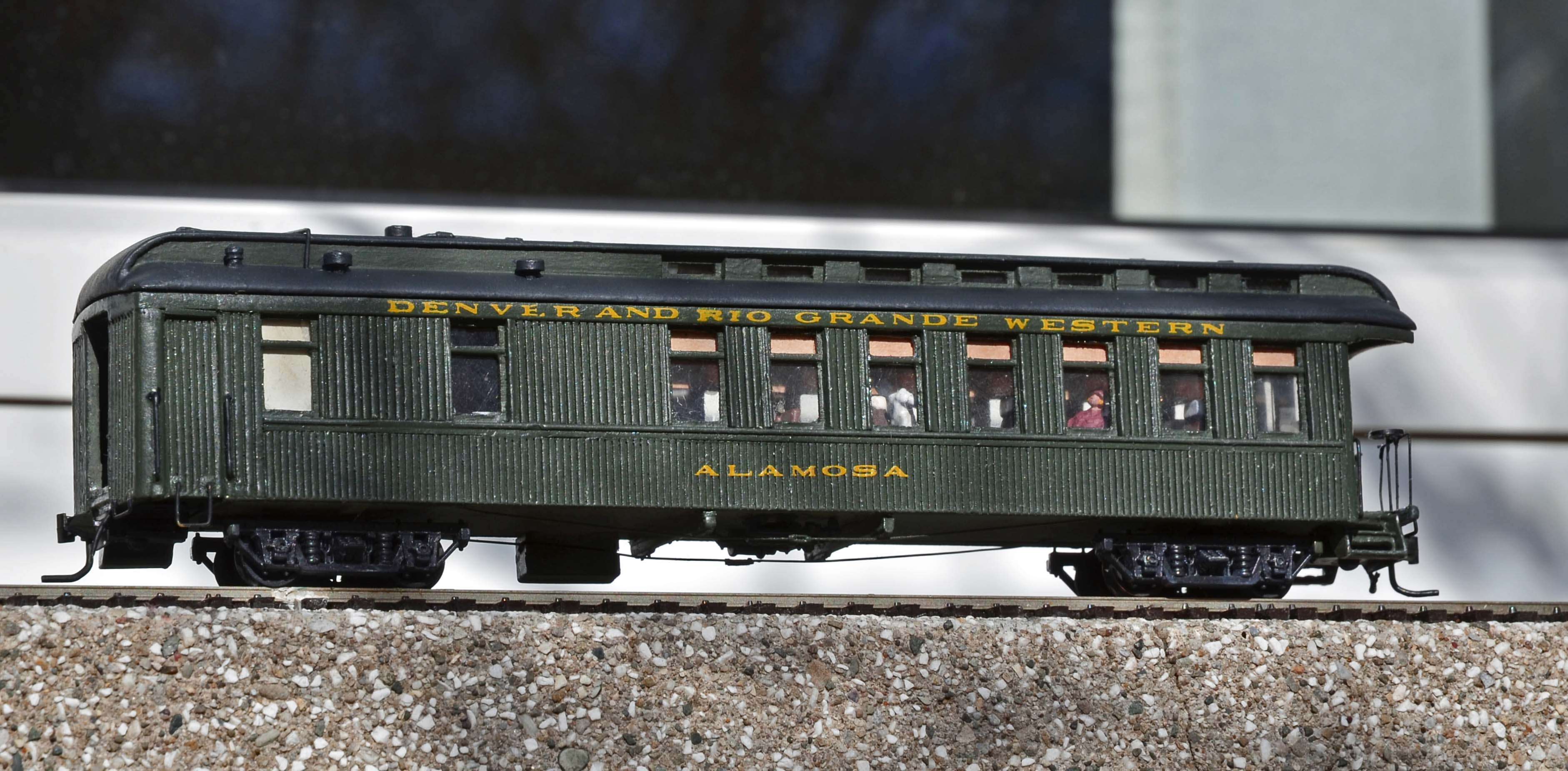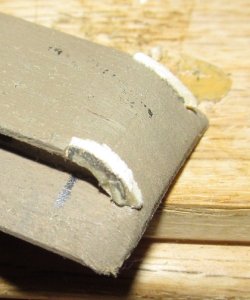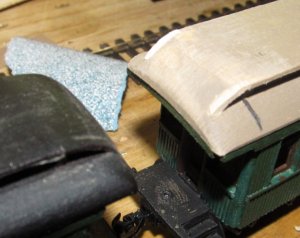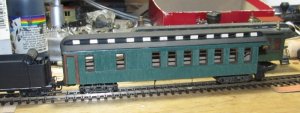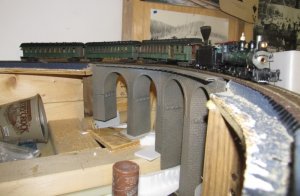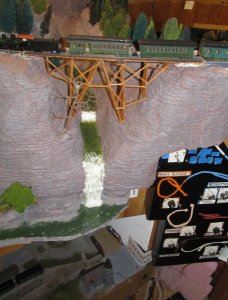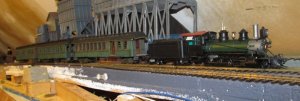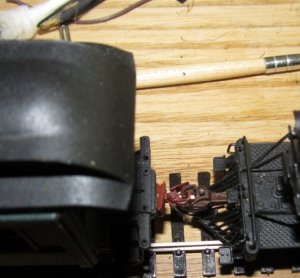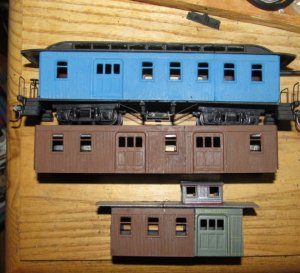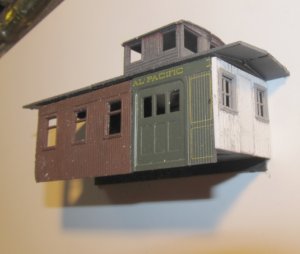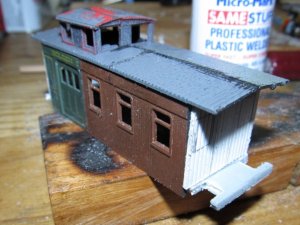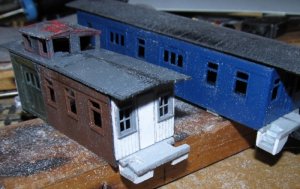 hen I was handling the combine, while un weathering it the roof came off. these fit quite tightly, and I usually have a very thin smear of white glue on them that keeps them attached, but lets you remove them if you need to for maintenance. with the roof off, I took a picture to show the interior. the interior of this car is not my work, as the combine was picked up built, at a train show. I did repaint the outside to match my State Line RR scheme. Whoever built this car originally did a fine job, it was painted brown and lettered for the Bonanza and Rawhide railroad.
hen I was handling the combine, while un weathering it the roof came off. these fit quite tightly, and I usually have a very thin smear of white glue on them that keeps them attached, but lets you remove them if you need to for maintenance. with the roof off, I took a picture to show the interior. the interior of this car is not my work, as the combine was picked up built, at a train show. I did repaint the outside to match my State Line RR scheme. Whoever built this car originally did a fine job, it was painted brown and lettered for the Bonanza and Rawhide railroad.I have done interiors in several on my ho cars, but would need to notch the quality of work up some if I do the narrow gauge cars to match what is done in this combine. the combine does need some boxes of freight, lugggage, and some bags of mail in the baggage area, and possibly a desk and chair for the conductor.
Bill Nelson
Last edited:


